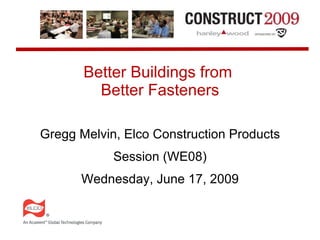The document discusses better fasteners for building construction. It notes that fasteners are a critical detail that connect larger building components. Specifying the right fasteners is important for project success as they must withstand loads and resist corrosion. The document outlines various types of corrosion that can affect fasteners, including rusting, galvanic corrosion caused by dissimilar metals, and hydrogen-assisted stress corrosion cracking (HASCC). HASCC is an invisible type of corrosion that causes fasteners to suddenly fail without visible signs of deterioration. The document emphasizes the importance of specifying corrosion-resistant fasteners.

































































